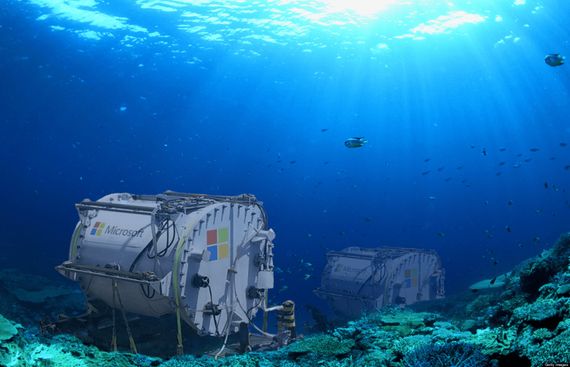Underwater Datacenters - Paving the Way for New Era of Data Storage

The world loves experiment, more so when it comes to technology as every other day, we see a new technology-wonder. Microsoft’s Project Natick is an addition to the world of technology innovation, which will almost revolutionize the world of datacenters. If you haven’t hear about Project Natick, let me explain you a little about it.
Probably 2014 could be called the year of transformation in the history of data center when during Microsoft’s ThinkWeek, the idea of underwater datacenter concept sprouted. The idea was to provide lightning-quick cloud services to coastal populations and save energy. This seemed a great idea, especially when half of the world’s population lives within 120 miles of the coast. Thus Project Natick was born.
In 2015, through the 105-day deployment in the Pacific Ocean, Natick team proved the feasibility of the project and thus opening the doors to the new possibilities of enabling data to travel short distance leading to fast & smooth web surfing, video streaming and game playing. It was now time to harness the potential of this new discovery. “We are now at the point of trying to harness what we have done as opposed to feeling the need to go and prove out some more. We have done what we need to do. Natick is a key building block for the company to use if it is appropriate,” said Ben Cutler, who leads Project Natick.
Hence in the spring of 2018, the Project Natik team submerged the Northern Isles datacenter (contained 12 racks, 864 servers with FPGA acceleration and 27.5 petabytes of storage) 117 feet deep to the seafloor, which remained there for almost two years. The team kept monitoring the performance and reliability of the datacenter. And the discovery made was as amazing as the concept itself. When pulled out of the water recently, it was clear that servers in its underwater data center were eight times more reliable than those on land, as reported by Microsoft! Just as William Chappell, the vice president of mission systems of Azure, said, “To learn how to make data centers reliable enough not to need human touch is a dream of our”, as Microsoft plans to become carbon-negative by 2030 through advancing the efficiency and sustainability of its cloud infrastructure, and use 100 percent renewable energy in all of its datacenters by 2025.
What Next?
Project Natick could be viable proof that less or no human touch/intervention could mean less failure and that the capsules were filled with nitrogen rather than oxygen. “We think it has to do with nitrogen atmosphere that reduces corrosion and is cool, and people not banging things around,” added Ben. Okay, now as the idea seemed to have worked, what next?
Just like Ben mentioned, “We think that we are past the point where this is a science experiment. Now it’s simply a question of what do we want to engineer – would it be a little one, or would it be a large one?’
Whatever it is, but we might move on have a better, more environmentally friendly data storage, both on land and under water. But this could be achieved only when companies are as responsible as Microsoft, which will recycle all the components including the steel pressure vessel, heat exchangers, servers and others, apart from restoring the sea bed to the same state it was in before it deployed.
The Advantages & Challenges
The mega datacenter market demand is expected to rise to $27.84 billion by 2025, growing at a CAGR of 4.58 percent (Mordor Intelligence), while the global datacenter power market is expected to grow at a CAGR of 6.9 percent between 2019-2025 (Grandview Research). No doubt, with every business going digital, the need for data storage on the cloud is increasing tremendously, which will consume a huge amount of energy. How can we address this growing need of the hour?
Unlike as quietly as the Microsoft’s Natick was hauled from underwater, the advantages of underwater datacenter will speak loudly if we consider the startling revelations of Natick. As people want faster response to their search and other online activities, underwater datacenters will make the dream come true for many. And being placed inside geographical boundaries around coasts, it will be easier to locate them than on land. On the other hand, as the companies struggle to find efficient energy solutions to reduce carbon footprint whilst contributing to energy efficiency, underwater datacenter will help them achieve this too as keeping the datacenter cool will consume much less of energy underwater than on land.
However, will putting datacenter underwater on sea bed have any negative impact on the underwater species? How long can we store the datacenters under water? How much would it cost if an immediate need for service arises? There are multiple questions that still await answers to. We need to tie the boot and wait for them.
Read More News :


.jpg)


.jpg)